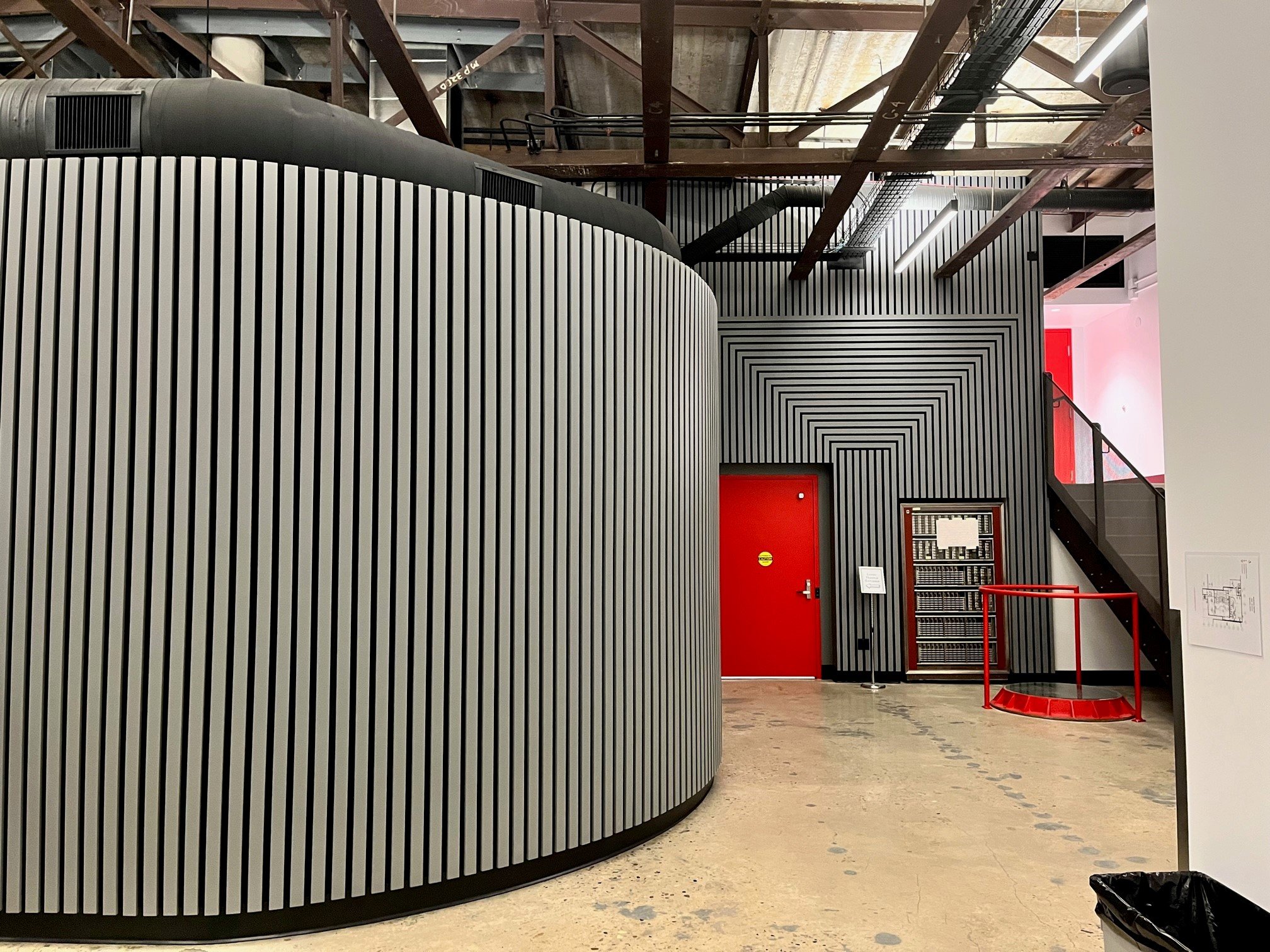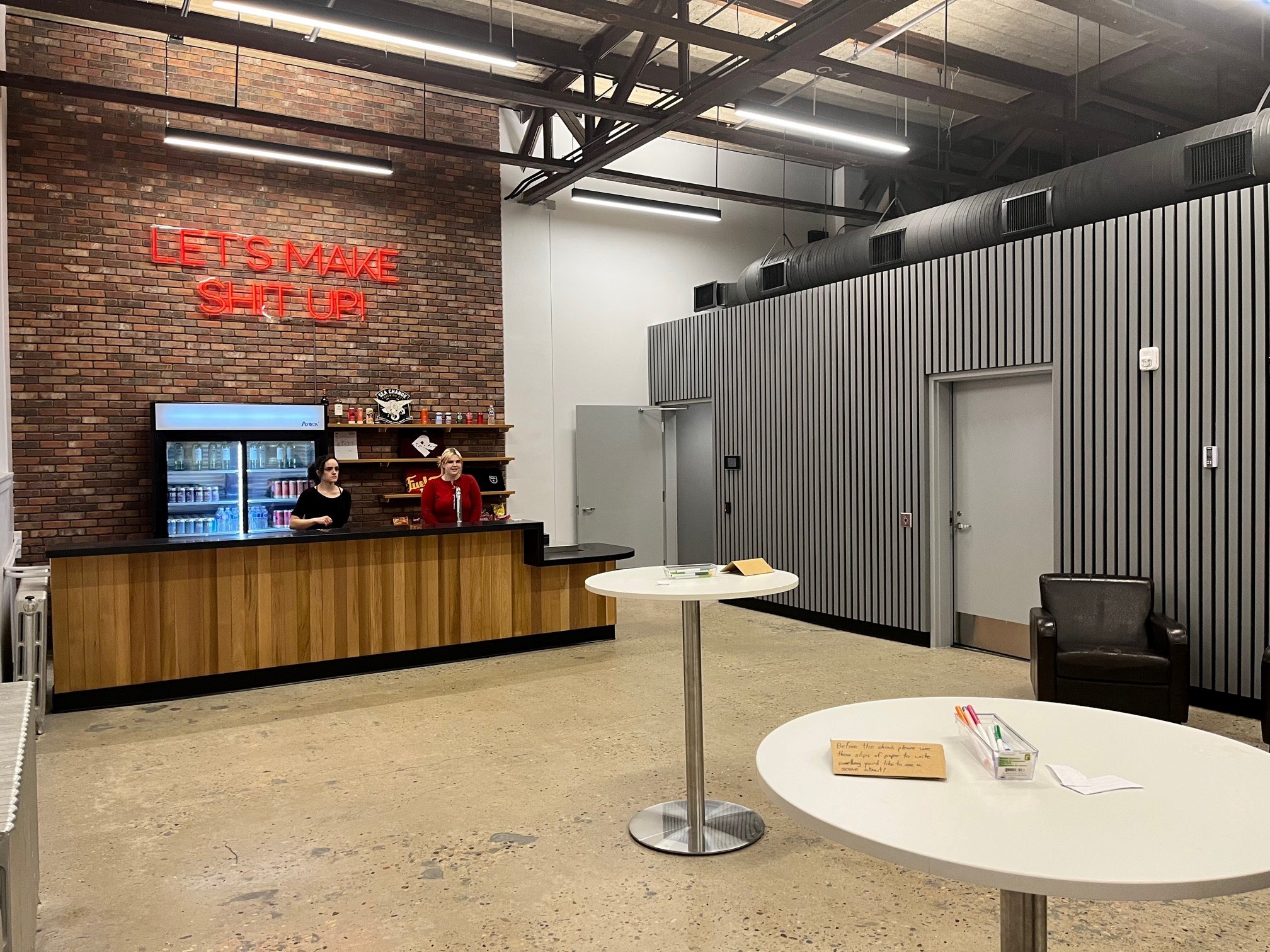
Avoid Common Mistakes in Acoustic Wall Panel Installation
Acoustic wall panels are a type of sound-absorbing material that is commonly used to improve the acoustics of a room. These panels are designed to reduce unwanted noise and echo, making them ideal for use in spaces where sound quality is important, such as music studios, conference rooms, and home theaters.
Proper installation of acoustic wall panels is crucial to achieving the desired sound quality and reducing noise pollution. Unfortunately, many people make common mistakes when installing these panels, which can compromise their effectiveness and even damage the panels themselves.
In this article, we'll provide you with an SEO-friendly outline of the most common mistakes to avoid when installing acoustic wall panels. By following these tips and tricks, you can ensure that your panels are properly installed and maintained, and that they continue to provide optimal sound quality for years to come. So, let's dive in and explore the world of acoustic wall panel installation!
Choosing the Right Type of Acoustic Wall Panel
When it comes to choosing the right type of acoustic wall panel, it's important to understand the different options available and the factors that should be considered in the decision-making process. Here are some key points to keep in mind:
Understanding Different Types of Acoustic Panels
There are several different types of acoustic wall panels available, including foam panels, fiberglass panels, wooden panels, and metal panels. Each type of panel has its own unique properties and benefits, so it's important to understand the differences before making a decision.
Factors to Consider When Choosing Acoustic Panels
When selecting acoustic wall panels, there are several key factors that should be considered, such as the size and shape of the room, the type of sound you want to absorb or diffuse, the level of noise pollution you want to reduce, and your budget.
Common Mistakes to Avoid When Choosing Acoustic Panels
One of the most common mistakes people make when choosing acoustic wall panels is focusing too much on aesthetics and not enough on functionality. While it's important to choose panels that look good in your space, it's even more important to select panels that will effectively reduce noise and improve sound quality.
Another mistake is not considering the acoustics of the room when choosing panels. Different types of panels are designed to absorb or diffuse different types of sound, so it's important to choose panels that are appropriate for the specific acoustics of your space.
Finally, many people make the mistake of not consulting with a professional before making a decision. Working with a professional acoustician or installer can help ensure that you choose the right panels for your space and that they are installed correctly.
Measuring the Room for Acoustic Wall Panels
Properly measuring the room is crucial when installing acoustic wall panels. Understanding the acoustics of the room and knowing how to measure it effectively can help ensure that the panels are installed in the right locations and provide the desired level of sound absorption. Here are some key points to keep in mind:
Understanding Room Acoustics
Before measuring the room, it's important to understand the acoustics of the space. The size, shape, and materials of the room can all affect the way sound travels and is absorbed. Understanding these factors can help you determine the best placement and type of acoustic wall panels for your space.
Tools and Techniques for Measuring the Room
There are several tools and techniques that can be used to measure a room for acoustic wall panels. These include sound level meters, which measure the volume of sound in decibels, and acoustic measurement software, which can provide more detailed information about the acoustics of the space.
Common Mistakes to Avoid When Measuring the Room
One of the most common mistakes people make when measuring a room for acoustic wall panels is not taking into account the position of furniture and other objects in the room. These objects can affect the way sound travels and should be accounted for when measuring the space.
Another mistake is not measuring the room at different times of day or during different activities. For example, if the room is used for both music recording and video conferencing, it's important to measure the acoustics of the space during both activities to ensure that the panels are effective in reducing noise pollution.
Finally, many people make the mistake of not measuring the room before purchasing acoustic wall panels. This can lead to purchasing panels that are either too small or too large for the space, or not effective in reducing noise pollution. Taking accurate measurements before making a purchase can help ensure that the panels are the right size and type for your space.
Proper Installation of Acoustic Wall Panels
Proper installation of acoustic wall panels is critical to their effectiveness and longevity. Improper installation can lead to damage to the panels, reduced sound absorption, and even safety hazards. Here are some key points to keep in mind when installing acoustic wall panels:
Preparation Steps Before Installation
Before installing acoustic wall panels, it's important to prepare the space properly. This may include clearing the walls of any debris, measuring the space for proper placement, and determining the best adhesive or mounting solution for the type of panels being installed.
Tools and Materials Needed for Installation
The tools and materials needed for acoustic wall panel installation will depend on the type of panels being installed and the mounting solution being used. In general, some common tools and materials may include a level, a drill, screws, brackets, and adhesive.
Step-by-Step Guide to Installing Acoustic Panels
Installing acoustic wall panels typically involves measuring and marking the placement of the panels, preparing the wall surface for mounting, applying the adhesive or mounting solution, and securing the panels to the wall. A step-by-step guide can help ensure that the installation process is done correctly and efficiently.
Common Mistakes to Avoid During Installation
One of the most common mistakes people make when installing acoustic wall panels is not properly aligning the panels or not using a level to ensure that they are straight. This can compromise their effectiveness and make them look unprofessional.
Another mistake is not properly preparing the wall surface for mounting. The wall should be clean and free of debris before the adhesive or mounting solution is applied. Failure to do so can result in the panels falling off the wall or not adhering properly.
Finally, it's important to use the right type of adhesive or mounting solution for the type of panels being installed. Using the wrong type can lead to damage to the panels or the wall surface, and can compromise the effectiveness of the panels.
Placement of Acoustic Wall Panels
Proper placement of acoustic wall panels is key to achieving optimal sound quality and noise reduction. Placing the panels in the right locations can help ensure that they effectively absorb or diffuse sound waves. Here are some key points to keep in mind:
Understanding the Importance of Proper Placement
The placement of acoustic wall panels can significantly impact the acoustics of a room. Panels that are placed in the wrong locations can actually create more problems than they solve, while panels that are placed in the right locations can significantly improve sound quality and reduce noise pollution.
Tips for Placing Acoustic Panels in Different Room Types
The placement of acoustic wall panels will depend on the type of room they are being installed in. In a music studio, for example, panels may be placed on the walls and ceiling to achieve optimal sound absorption. In a conference room, panels may be placed strategically to reduce echo and improve speech intelligibility.
Common Mistakes to Avoid When Placing Acoustic Panels
One of the most common mistakes people make when placing acoustic wall panels is not placing them in the right locations. Placing panels randomly on the walls can actually worsen the acoustics of a room. It's important to consult with a professional or do some research to determine the optimal placement for the type of room you are installing the panels in.
Another mistake is not evenly distributing the panels throughout the space. Placing too many panels in one area and too few in another can create uneven sound absorption and lead to a less than ideal listening experience.
Finally, many people make the mistake of not leaving enough space between the panels and the wall. This can compromise the effectiveness of the panels and make them look unprofessional. It's important to follow the manufacturer's guidelines for spacing when installing acoustic wall panels.
Maintenance and Upkeep of Acoustic Wall Panels
Proper maintenance and upkeep of acoustic wall panels is important to ensure that they continue to provide optimal sound quality and noise reduction over time. Neglecting to maintain or clean the panels can compromise their effectiveness and even lead to damage. Here are some key points to keep in mind:
Understanding the Importance of Maintenance
Acoustic wall panels require regular maintenance to keep them clean and functioning properly. Regular maintenance can help prevent the buildup of dirt and dust, which can compromise their effectiveness over time. In addition, regular maintenance can help prolong the life of the panels and prevent damage.
Tips for Keeping Acoustic Panels Clean
To keep acoustic wall panels clean, it's important to dust them regularly with a soft, dry cloth. For more stubborn dirt and stains, a mild soap solution and a soft brush can be used. It's important to avoid using harsh chemicals or abrasive materials, which can damage the panels.
Common Mistakes to Avoid When Maintaining Acoustic Panels
One of the most common mistakes people make when maintaining acoustic wall panels is using the wrong cleaning products. Harsh chemicals or abrasive materials can damage the panels or reduce their effectiveness. It's important to use mild cleaning products and gentle cleaning techniques.
Another mistake is neglecting to clean the panels regularly. Dust and dirt can build up quickly on the surface of the panels, which can compromise their effectiveness over time. It's important to establish a regular cleaning schedule to ensure that the panels are kept clean and functioning properly.
Finally, many people make the mistake of neglecting to inspect the panels for damage. Over time, acoustic wall panels can become damaged or worn, which can compromise their effectiveness. It's important to inspect the panels regularly for any signs of damage and to replace them if necessary.
Benefits of Acoustic Wall Panels
Acoustic wall panels provide a wide range of benefits, from improving sound quality to reducing noise pollution and increasing privacy. Here are some key benefits of acoustic wall panels:
Improved Sound Quality
Acoustic wall panels are designed to absorb or diffuse sound waves, which can significantly improve sound quality in a room. They can help reduce echoes, reduce reverberation, and make speech more intelligible.
Reduced Noise Pollution
Acoustic wall panels can help reduce noise pollution in a variety of settings, from offices to music studios. They can absorb or diffuse sound waves, which can reduce the transmission of noise between rooms or outside the building.
Increased Privacy
Acoustic wall panels can also increase privacy by reducing the transmission of sound through walls. This can be especially important in offices or other shared spaces where confidential conversations may take place.
Better Productivity
Improved sound quality and reduced noise pollution can also lead to better productivity in the workplace. Research has shown that excess noise can decrease productivity, increase stress levels, and even lead to health problems such as hearing loss.
Statistics and Studies on the Benefits of Acoustic Panels
Numerous studies have shown the benefits of acoustic wall panels in various settings. For example, a study by the University of California, Berkeley found that reducing noise pollution in an open-plan office led to a 10% increase in productivity. Another study by the American Speech-Language-Hearing Association found that acoustic treatment can significantly improve speech intelligibility in classrooms.
Cost of Acoustic Wall Panels
The cost of acoustic wall panels can vary depending on several factors, including the type of panels, the size of the room, and the installation method. Here are some key points to keep in mind:
Factors Affecting the Cost of Acoustic Panels
The cost of acoustic wall panels can be affected by several factors, such as the type of panels being used, the size and shape of the room, the thickness and quality of the panels, and the installation method. Additional factors that may impact cost include shipping fees, taxes, and the cost of labor.
Cost Comparison of Different Types of Acoustic Panels
The cost of acoustic wall panels can vary depending on the type of panels being used. Foam panels tend to be the most affordable, while fiberglass and wooden panels can be more expensive. Metal panels tend to be the most expensive due to their durability and sound-reflecting properties.
Tips for Budgeting for Acoustic Panels
When budgeting for acoustic wall panels, it's important to consider the size of the room, the type of panels needed, and the installation method. To save money, you may consider purchasing panels in bulk or using a DIY installation method. It's also important to remember that the cost of acoustic wall panels can be an investment in the long-term health and productivity of the space, as well as the quality of the sound.
Where to Purchase Acoustic Wall Panels
Acoustic wall panels can be purchased from a variety of local and online retailers. Here are some key points to keep in mind when selecting a seller:
Local and Online Stores
Acoustic wall panels can be purchased from a variety of local and online retailers. Local stores may offer the advantage of being able to see and touch the panels before making a purchase, while online stores may offer a wider selection and more competitive pricing.
Factors to Consider When Choosing a Seller
When selecting a seller for acoustic wall panels, it's important to consider several factors, such as the quality and selection of panels, the reputation and reliability of the seller, and the level of customer service offered. It's also important to consider the seller's return policy, shipping fees, and any warranties or guarantees offered.
Common Mistakes to Avoid When Purchasing Acoustic Panels
One of the most common mistakes people make when purchasing acoustic wall panels is not doing enough research. It's important to research the different types of panels available, as well as the reputation and reliability of the seller.
Another mistake is not considering the specific acoustics of the room when selecting panels. Different types of panels are designed to absorb or diffuse different types of sound, so it's important to choose panels that are appropriate for the specific acoustics of your space.
Finally, many people make the mistake of not properly budgeting for the purchase. It's important to consider not only the cost of the panels, but also any additional costs such as shipping fees and installation costs. By properly budgeting for the purchase, you can ensure that you get the best value for your money.
Conclusion
Proper installation and maintenance of acoustic wall panels can significantly improve the sound quality and noise reduction in a space. To ensure the best results, it's important to avoid common mistakes and follow best practices for installation and maintenance. Here are some key points to keep in mind:
Recap of Common Mistakes to Avoid
Some common mistakes to avoid when installing and maintaining acoustic wall panels include choosing the wrong type of panels, not properly measuring the room, using the wrong adhesive or mounting solution, not placing the panels in the right locations, neglecting to clean the panels regularly, and not properly budgeting for the purchase.
Importance of Proper Installation and Maintenance of Acoustic Wall Panels
Proper installation and maintenance of acoustic wall panels can lead to improved sound quality, reduced noise pollution, increased privacy, and better productivity. By avoiding common mistakes and following best practices, you can ensure that your acoustic wall panels are functioning properly and providing the desired level of sound absorption.
Final Thoughts
Acoustic wall panels can be an effective solution for improving the sound quality and reducing noise pollution in a variety of settings, from music studios to offices. By understanding the importance of proper installation and maintenance, and avoiding common mistakes, you can ensure that your acoustic wall panels are providing the best possible results.





